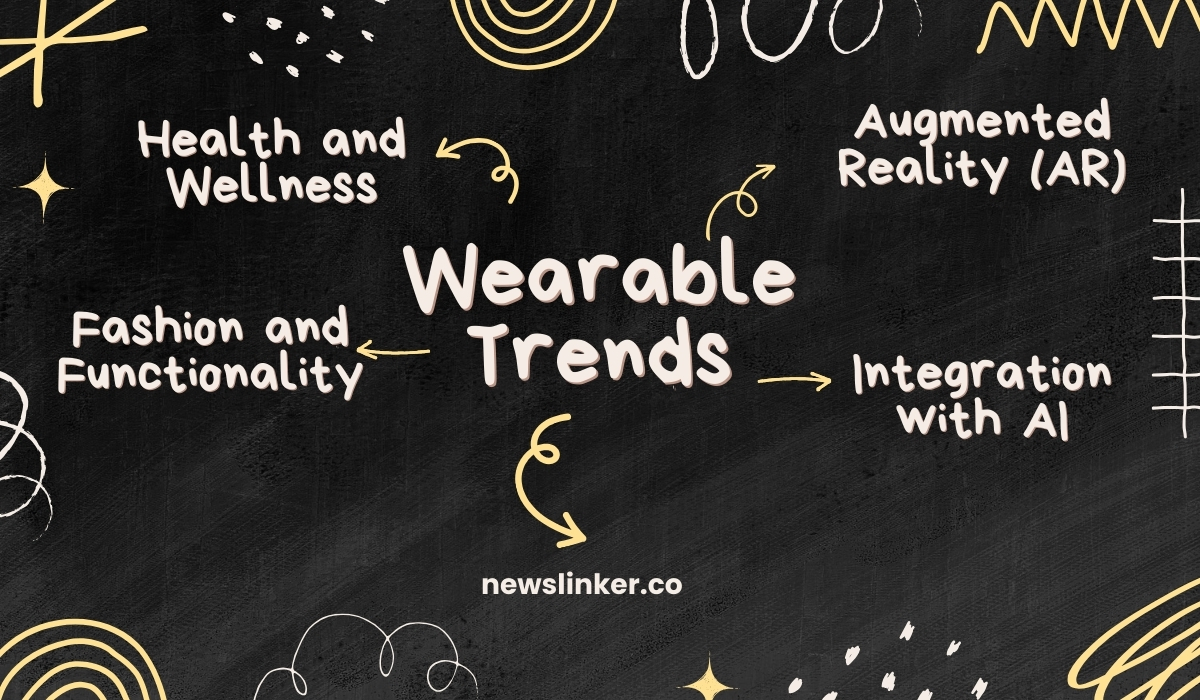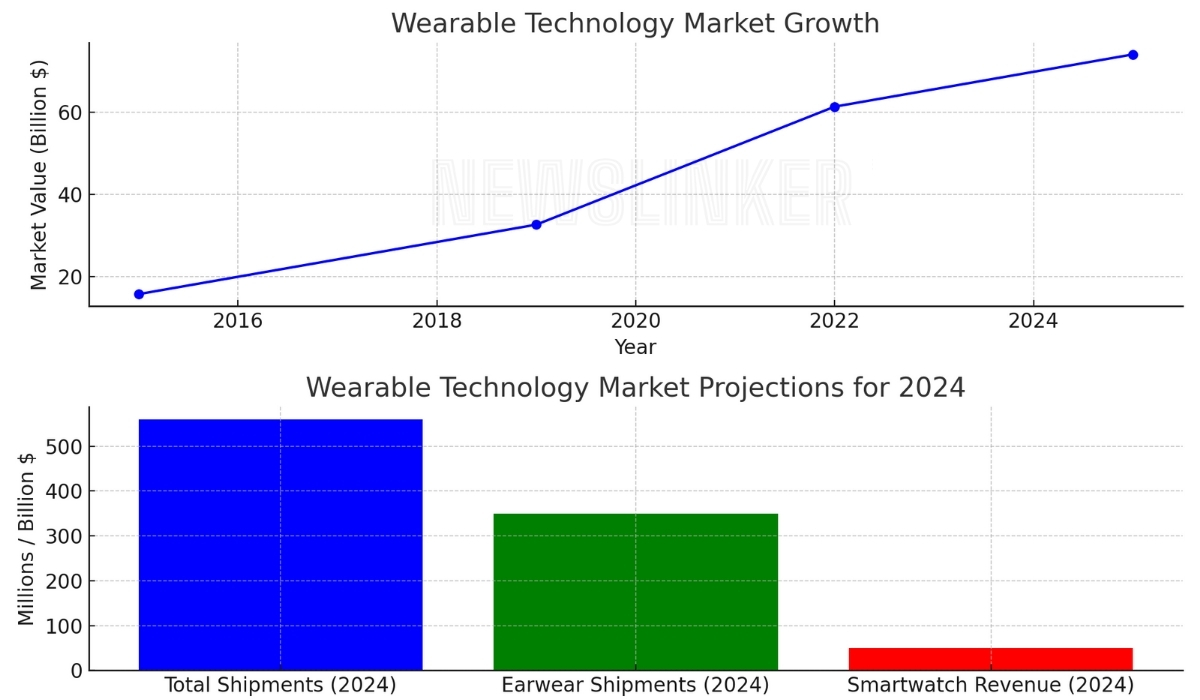Wearable technology, often simply referred to as wearables, is a category of electronic devices that can be worn on the body as accessories, embedded in clothing, or even implanted under the skin. These devices are designed to be hands-free and can provide numerous functionalities, from health monitoring to real-time notifications and navigation.
How Does Wearable Technology Work?
Wearable technology operates through a combination of sensors, microprocessors, and internet connectivity. These devices typically include built-in sensors that can track various metrics such as physical activity, heart rate, and even sleep patterns. The data collected by these sensors is then processed by the device’s microprocessor and can be synced with other electronics, such as smartphones or computers, through wireless connections like Bluetooth or Wi-Fi.
For instance, fitness trackers and smartwatches, which are among the most common wearables, wrap around the user’s wrist to monitor activities throughout the day. These devices can track steps, heart rate, calories burned, and even sleep quality. Advanced wearables might also include GPS for location tracking, accelerometers for movement detection, and optical sensors for more detailed health monitoring.
Is Wearable Tech Safe?
Generally, wearable technology is safe for everyday use. However, like any electronic device, there are potential risks and considerations. Privacy and data security are significant concerns as these devices collect and transmit personal data. It’s crucial for manufacturers to implement robust security measures to protect user data from breaches or unauthorized access.
Another consideration is the potential for electromagnetic interference, though current research indicates that wearables emit low levels of radiation, typically not harmful to human health. Additionally, ensuring that wearables fit comfortably and are used correctly can prevent minor issues like skin irritation.
How Wearables Will Change the World
Wearables have the potential to revolutionize various aspects of daily life and industries. In healthcare, they offer continuous monitoring of vital signs, which can lead to early detection of diseases and better management of chronic conditions. For example, wearables can monitor heart rates and notify users of irregularities that might require medical attention.
In sports and fitness, wearables provide athletes and fitness enthusiasts with real-time data on their performance, helping to optimize training and improve results. Smart clothing with embedded sensors can track movements and provide insights that were previously available only through professional training equipment.
The integration of wearables into everyday objects and clothing can also enhance connectivity and convenience, making routine tasks more efficient and interactive. For instance, smart glasses can overlay navigation directions or notifications directly onto the user’s field of view, blending digital information with the physical world seamlessly.
What Is the Wearable Trend?
The wearable trend encompasses a broad range of devices, from fitness trackers and smartwatches to smart glasses and health-monitoring implants. The market is rapidly expanding as technology advances and consumer demand grows. Current trends in wearables include:
- Health and Wellness: Devices focused on health monitoring, such as smartwatches with ECG capabilities, are becoming more prevalent. They offer features like sleep tracking, stress management, and blood oxygen monitoring.
- Fashion and Functionality: Wearables are becoming more stylish and integrated into everyday fashion. Smart jewelry, smart clothing, and accessories like smart belts and rings combine aesthetics with technology.
- Augmented Reality (AR): AR wearables like smart glasses are gaining traction, providing users with enhanced interactive experiences, whether for navigation, gaming, or professional applications.
- Integration with AI: AI-powered wearables offer personalized recommendations and insights by analyzing user data. These devices can learn user habits and preferences to provide tailored suggestions.

How Many People Wear Wearables?
The adoption of wearable technology has been significant and continues to grow. As of 2020, around 22% of the global population owned a wearable device, with three out of five users wearing them daily. The number of connected wearable devices reached 722 million in 2019 and surpassed 1 billion by 2022. The widespread use is driven by the increasing awareness of health and fitness, advancements in technology, and the desire for more integrated and convenient lifestyle solutions.
How Big Is the Wearables Market?
The wearable technology market has seen substantial growth, with its value rising from $15.74 billion in 2015 to $32.63 billion in 2019, and reaching over $61.30 billion in 2022. The market is projected to continue expanding at a compound annual growth rate (CAGR) of around 15.51% from 2016 to 2022, potentially reaching $74 billion by 2025. Wearable devices, which include smartwatches, fitness trackers, headphones, and extended reality (XR) devices such as VR headsets and AR glasses, are equipped with smart sensors connected to the internet to transmit, log, or analyze data. By 2024, the wearable market is forecasted to record shipments of approximately 560 million devices. Earwear and smartwatches are the leading segments driving this growth. Earwear is expected to account for almost 350 million units shipped in 2024, making it the most successful segment. Smartwatches, which combine smartphone and fitness tracker capabilities, are anticipated to generate revenues of nearly $50 billion in the same year, with further growth expected.

Major players in the wearable market include Apple, Xiaomi, Huawei, and Samsung. Apple, in particular, has maintained a dominant position with its Apple Watch, holding over 20% market share as of 2023. Other notable brands include Fitbit, which was the second most popular smartwatch brand in the U.S., and Beats, the second most popular headphone brand.
What Is the Potential of Wearables?
The potential of wearables is vast, spanning numerous fields and applications. In healthcare, wearables can transform patient care by enabling continuous monitoring and providing real-time data to healthcare providers. This can lead to early diagnosis, personalized treatment plans, and better management of chronic diseases.
In the sports and fitness industry, wearables can enhance training efficiency and performance through precise tracking and feedback. The integration of AI and machine learning can offer personalized fitness plans and insights, making training more effective.
The fashion industry is also tapping into wearables, merging technology with style to create innovative products that serve both functional and aesthetic purposes. From smart fabrics that adjust to temperature changes to jewelry that doubles as a health monitor, the possibilities are endless.
Moreover, the development of AR and VR wearables can revolutionize how we interact with the digital world, providing immersive experiences for gaming, education, and professional applications. These technologies can enhance productivity, learning, and entertainment by seamlessly blending virtual elements with the real world.
In conclusion, wearable technology is rapidly evolving and integrating into various aspects of life, from health and fitness to fashion and entertainment. As the technology advances and becomes more accessible, the impact of wearables on our daily lives and industries will continue to grow, offering new opportunities and transforming how we live and interact with technology.
The Latest Scientific Publications on Wearable Technologies
“Wearable and Multiplexed Biosensors based on Oxide Field-Effect Transistors” published in Small Methods on 6 July 2024, researchers have developed a groundbreaking wearable sensor for continuous, non-invasive monitoring of physicochemical signals, enhancing portable healthcare. The sensor, based on oxide field-effect transistor (FET) technology, addresses challenges in mechanical flexibility and multiplexed sensing while integrating on-site signal processing and wireless transmission functionalities. Utilizing a solution-processed ultrathin In2O3 active channel layer, approximately 6 nm thick, the sensor array allows simultaneous measurement of ion concentrations (H+, Na+, K+) and temperature. This advancement, compatible with standard semiconductor technology, operates at a low voltage of 0.005 V. The study presents a significant step forward in wearable health monitoring applications, offering high sensitivity, flexibility, and scalability.
“Stretchable and Self-Powered Mechanoluminescent Triboelectric Nanogenerator Fibers toward Wearable Amphibious Electro-Optical Sensor Textiles” published in Advanced Science on 6 July 2024, scientists have developed a novel stretchable and self-powered mechanoluminescent triboelectric nanogenerator fiber (MLTENGF) to improve wearable electronics for smart human-machine interaction interfaces. Addressing the challenges of weight, stretchability, and non-contact sensing, this new fiber utilizes lightweight carbon nanotube material. The MLTENGF exhibits a 200% enhancement in electrical signal and produces clear optical signals both on land and underwater. Remarkably, it maintains sensitivity even after stretching up to 200% and can detect stimuli from a distance of 35 cm. Applications include home security, intelligent musical instruments, traffic collision avoidance, and underwater communication, paving the way for advanced wearable electro-optical textiles.










